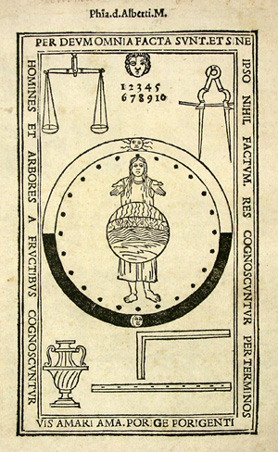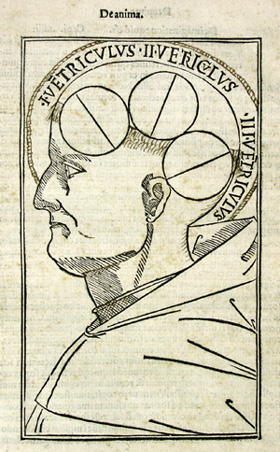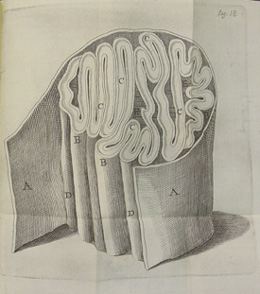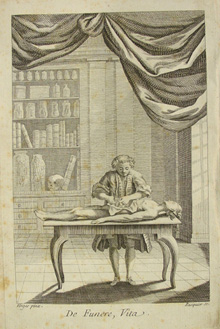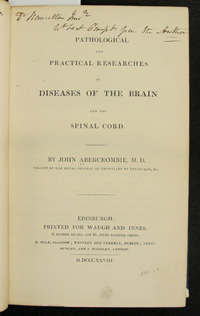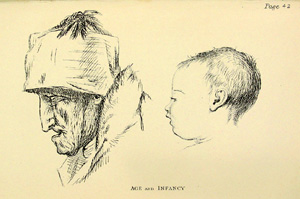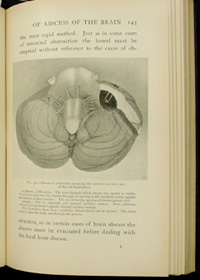The H. Richard Tyler Collection of the American Academy of Neurology Library
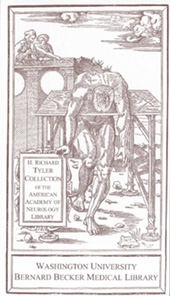 |
H. Richard Tyler (b. 1927) received his medical degree from the Washington University School of Medicine in 1951. He led the Neurology Division at Peter Bent Brigham Hospital in Boston from 1956-1988 and is an internationally renowned neurologist at Harvard Medical School.
Although neurology became a specialty late in the 19th century, its origins are in early anatomical atlases and general medical works that depict and describe the nervous system, or specifically the brain or the spinal cord. Of the 7,000 volumes in the H. Richard Tyler Collection, the majority are landmarks in neurology and neuroscience. Dr. Tyler’s donation ensures that future neurologists and medical historians will be able to uncover and interpret the beginnings and development of this significant field in medicine.
The American Academy of Neurology Library Collection contains rare neurological textbooks and monographs that have been donated to the AAN by its members. The generous donations of many AAN members, the outstanding library of Dr. H. Richard Tyler, and the institutional archives of the American Academy of Neurology combine to form one of the prime research collections concerning the history of neurology and the neurosciences.
Albertus of Orlamünde, Dominican (fl. late 13th c.). Philosophia pauperum. Venetiis: Georgium de Arriuabenis, 1496.
The Philosophia pauperum, now generally ascribed to Albertus of Orlamünde, includes extracts from writings of Albertus Magnus (1193?-1280). Works by Albertus Magnus were often digested by his students and confrères for the instruction of the less learned brethren. In earlier manuscripts this “Philosophy for the simple” (Philosophia pauperum), as the work was sometimes called, is ascribed only to a “Brother Albert, O.P.” Other manuscripts are more specific, mentioning an “Albert of Orlamünde.” Scholars now believe that it was this Albert (fl. late 13th c.), a Dominican teacher in Thüringen, who compiled these digests, a short textbook of natural philosophy and psychology which was used in schools throughout the Middle Ages. In the chapter about the soul (De anima) the author discusses the three ventricles of the brain as it is represented in the illustration above right.
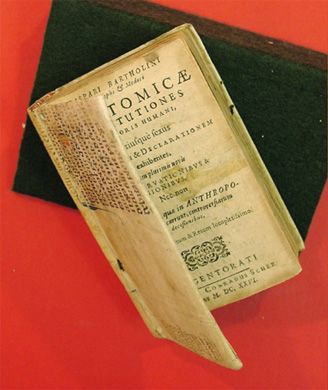 |
 |
Caspar Bartholin, the Elder (1585-1629). Anatomicae institutiones. Argentoratum: Scher, 1626.
Caspar Bartholin was a Danish physician, the eldest of the four known Bartholins who became noted medical doctors. He described first the functions of the olfactory nerve in 1611. Note that the book is bound in a fragment of a medieval manuscript page, handwritten on parchment and possibly more than 200 years older than Bartholin’s work.
Marcello Malpighi (1628-1694), Carlo Fracassati (ca. 1630-1672). Epistolae anatomicae virorum clarissimorum Marcelli Malpighii et Caroli Fracassati. Amstelodami: apud C. Commelinum, 1669.
A collection of letters compiled by Carlo Fracassati, Malpighi’s friend and colleague at the University of Bologna. Four of the letters written by Malpighi and two by Fracassati are treatises about the brain. Detailed copperplate illustrations represent Malpighi’s microscopic investigations. This image depicts the crosscut of the optical nerve in the Xiphia fish.
Pierre Barrère (1690-1755). Observations anatomiques, tirées des ouvertures d’un grand nombre de cadavres, propres a decouvrir les causes del maladies et leurs remédes. Perpignan: J. B. Reynier, 1753. (Frontispiece)
Barrère, a French naturalist and physician, first practiced medicine in his native village and then spent three years in Cayenne. Later he became the Chair of the Department of Botany at the University of Perpignan and worked in that city’s military hospital.
As a naturalist, he wrote extensively on ornithology and ancient fossils. In 1741 he described for the first time the mata mata, a “large land turtle with spiky and ridged scales.” His medical publication, including the above dissection scene on the frontispiece, first appeared in 1751 under the title Diverses observations anatomique.
Sir Charles Bell (1774-1842). The anatomy of the brain, explained in a series of engravings. London: Printed by C. Whittingham for T. N. Longman and O. Rees, 1802. (Plate 1)
Sir Charles Bell, a highly respected Scottish anatomist, surgeon, physiologist and neurologist of the 19th century, was trained in art as well as in medicine. He illustrated all of his medical works, several of which were co-authored by his older brother, the noted surgeon and teacher, John Bell (1763-1820). The twelve plates illustrating the structure of the brain in this volume are among the most beautiful in neuroanatomy. Bell’s scientific discoveries were many, including the determination of the motor and sensory pathways of the spinal nerves. His book An Idea of a New Anatomy of the Brain (1811) has been called the “Magna Carta of neurology.”
John Abercrombie (1780-1844). Pathological and practical researches on diseases of the brain and the spinal cord. Edinburgh: Waugh and Innes, 1828. (Title page)
This is the first textbook published on neuropathology. Abercrombie, a graduate of Edinburgh University, had a successful medical practice in Edinburgh. From 1805 he served as surgeon to the Royal Public Dispensary and published several important medical works, including Researches on the Diseases of the Intestinal Canal and Liver and other Viscera of the Abdomen, both published in 1828. Abercrombie also found time for philosophical speculations, and in 1830 he published his Inquiries concerning the Intellectual Powers of Man and the Investigation of Truth, which was followed in 1833 by a sequel, The Philosophy of the Moral Feelings.
Note the author’s inscription on the top of the title page.
Charles Bell (1774-1842). The anatomy and philosophy of expression as connected with the fine arts. 7th edition, revised. London: Bell, 1900. (Page 42)
First published in 1806 under the title Essays on the anatomy of expression in painting, this collection of essays was revised and reprinted several times over the ensuing years. In it Bell sought to reconcile the subjects of anatomy and fine art. In the introduction, Bell proposed “I am not without hope that a new impulse may be given to the cultivation of the fine arts, by explaining their relation to the natural history of man and animals; and by shewing how a knowledge of outward form, and the accuracy of drawing which is a consequence of it, are related to the interior structure and functions.” He not only discussed the anatomical and physiological basis of facial expressions but also provided a critical comparison of ancient and modern art.
This illustration accompanied the essay on Changes from Infancy to Age. Most famously, this book contains Bell’s illustrations of expressions such as pain, laughter, weeping, jealousy and remorse.
Charles A. Ballance (1865-1936). Some points in the surgery of the brain and its membranes. London: McMillan, 1907. (Page 145)
A pioneer English neurosurgeon, Charles A. Ballance researched nerve regeneration with James Purves-Stewart (1869-1949) and worked with Victor Horsley (1957-1916) in removing the first spinal tumor. He introduced nerve grafting for facial palsy in 1932 and was honored as the founder and president of The Society of British Neurological Surgeons in 1926.
Ballance’s extensive operative experiences were detailed in this 1907 book, which was compiled from the material Ballance prepared for the Lettsomian Lectures of the Medical Society of London for 1906.
Novels by S. Weir Mitchell (1829-1914)
Silas Weir Mitchell was a pioneer in the application of psychology to medicine, famous for his treatment of nervous disorders and for his study of the nervous system. He was a prolific writer of not only medical monographs but also novels of historical romance and psychology, poetry, short stories, and children’s stories. Mitchell received his medical degree from Jefferson Medical College in 1850 and served as an Army surgeon during the Civil War. Mitchell was an early advocate of the rest cure in the treatment of nervous diseases; Mitchell’s disease (erythromelalgia) is named after him.
When all the Woods are Green (1898), Dr. North and his Friends (1900), and Circumstance (1901) are but a few of the Mitchell’s novels.
| Back to Top | © 2007 Washington University School of Medicine, St. Louis, Missouri |

